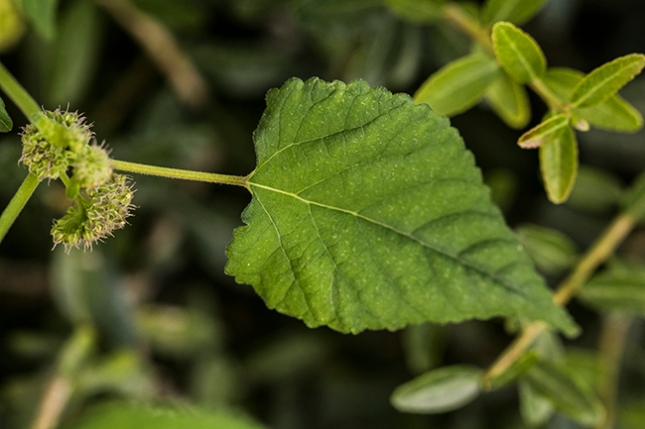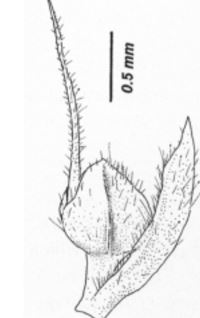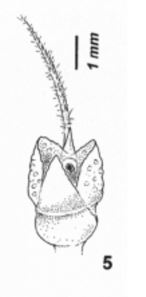Fatoua villosa
(Origin of name Fatoua not certain, a surname?, villous means shaggy)
Moraceae
All around the Mulberry Weed the monkey chased the weasel. The monkey thought it was all in fun…pop goes the Mulberry Weed!
No Friday fieldtrip today. Displaced by back-to-school meetings. Contrary to common perceptions, however, meetings don’t scotch botany joy when your guiding principle with plants is, “love the one you’re with.” The weeds in the parking lot are as interesting to me as any species. In tune with such democratic botany, to the right of the door into the meeting hall, in the old mulch among cigarette butts, resides today’s selection spotted during a break: Mulberry Weed.
A member of the Mulberry Family, Fatoua villosa invaded the U.S. at about the same time as Herman’s Hermits. The leaves of this Asian novelty resemble those of our native Red Mulberry. The two are related, but not that related, so the similarity may reflect some combo of convergent evolution and shared genes, a puzzling situation in classification.
Photos: True Mulberry on left (by John Bradford), Mulberry Weed and cigarette butt today in Lake Worth, Florida, on right.
Fatoua has skitter-scattered from an apparent debut in Louisiana over much of the U.S., mostly in the South, with cameo appearances northward, to the entertainment of northern botanists. The northward appearances are no mystery, because the species spreads in horticultural nursery material like Measles spreading through 3rd graders.

Flower cluster on left, with mixed male and female flowers
Which brings us to the good stuff: The plants shoot their “seeds” (to be exact, achenes) like shotgun pellets 3 feet or more. In a crowded plant nursery a Fatoua infesting a flowerpot can rain seeds on its neighbor pots, and they in turn shower more posies in a chain reaction, and then great big trucks ship them all over to pepper the nation. Buy a nursery plant and you too may gain a Mulberry Weed. Or a few.
To make infestation easier, this talented weed matures from seed to flower back to seed in a few short weeks, even when mere inches tall, maxing out at about three feet.
How do those seed shooters work? In 2003 botanists Carroll Wood and Norton Miller took a peep at it. The illustrations below are from their work*. Each inflorescence has mixed male and female flowers. The female flowers are bizarre. (So are the males but enough is enough.)
A female flower is shown below, with a long hairy style (pollen-receptive organ) rising from the side. Why displaced to the side? You’ll see.

Remove the non-reproductive parts, and the female looks like the illustration below. The warty “bowl” (developing fruit) to the right of the style hides the single seed preparing to launch. Note the warts on the cover of the bowl. We’ll see those again.

When it is time to fling, the bowl explodes its lid open with the seed flying forth like a mortar shell. The flower shown below has popped its top and shot its seed. The two halves of the lid now stand vertically like the lid on a jack-in-the-box. You can recognize the ripped-open lid halves by the warts.

The final drawing shows the projectile seed (achene).

——————————————-

